Acadia National Park is famous for its rocky trails and mountains as well as its coastal views. With just one day in Acadia National Park, you’ll have to be efficient with your time if you want to see as much as possible. The park is big and if you only have one day, it helps to limit yourself to just one area. In this one day itinerary, we’ll focus on Park Loop Road and all of the exciting stops along and nearby.
One Day in Acadia National Park
This is not the only way to spend one day in Acadia National Park, but it’s what I would recommend for travelers who are visiting for the first time. You’ll see some of the most iconic views of the park and get a nice variety. While there’s a decent amount of driving, there’s also some hiking on this itinerary. There is one hard hike (the Beehive Trail, which I’ve listed as the first activity of the day) and one hike that can be easy or hard, depending on which route you want to take.
This itinerary is based on my visit to Acadia National Park, though it’s varied slightly since I spent two days exploring the park.
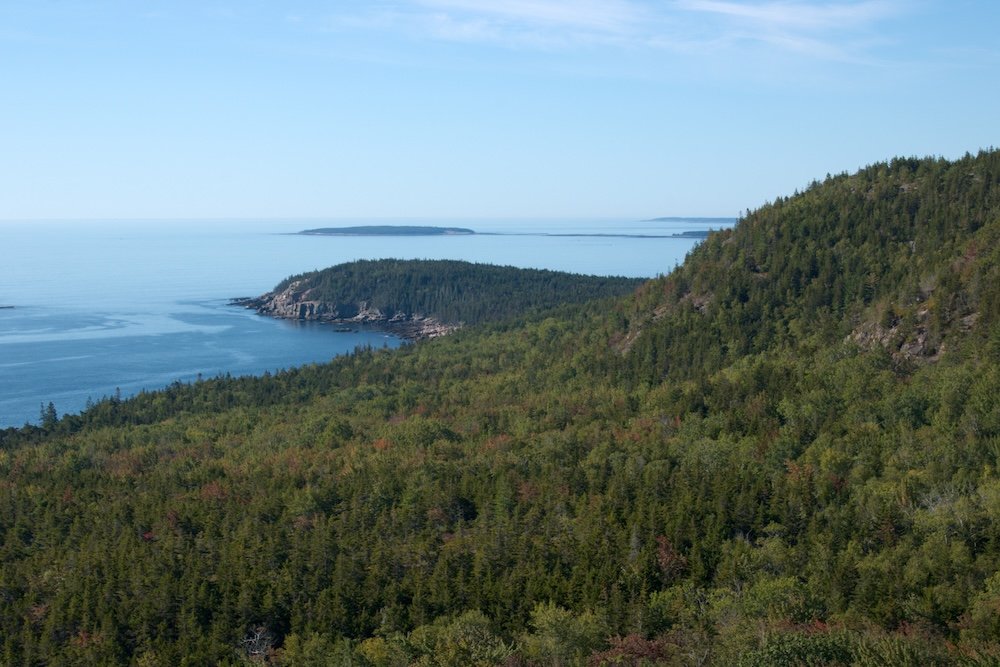
8:00 – Hike the Beehive Trail
The Beehive Trail is one of the most popular trails at Acadia National Park and that’s why I recommend starting your day with it. By getting here early, you’ll have a better chance at minimizing people on the trail.
This trail is adventurous and features metal rungs drilled into the rock cliffs to help you pull yourself along. I didn’t find it to be that bad (though if you have short legs like I do, you might have to work a little harder than others in a few sections), but you know yourself better than anyone. While I recommend the Beehive Trail, this is not a place to face your fears.
I logged 1.6 miles and 512 feet of elevation on the Beehive Trail. It took me an hour and 10 minutes. I spent a little bit of time at the top, but not a lot. The views were great, but I wasn’t a huge fan of the impromptu ukulele concert happening at the top of the mountain.
Note that if you don’t want to use the rung ladders and walk along cliff edges, you can still reach the main viewpoint by heading up the Bowl Trail. This takes you up the back way and while you’re sure to pass people who are descending from the Beehive, this section of trail can be hiked in either direction (the main Beehive Trail is one way due to the ladders and metal rungs).
9:30 – Drive Park Loop Road
With the first hike out of the way, it’s time to start on some of the viewpoints along the coast. Acadia’s Park Loop Road unsurprisingly loops through the park and provides a great sightseeing spine.
Much of the loop is one way, so while there will be a few stops behind you (assuming you did the Beehive Trail first), there will be time later in the day to make those up. For now, focus on heading down Park Loop Road.
Before you leave the Beehive Trail, stop at Sand Cove for a sandy view of the coast. Just down the way is Thunder Hole which turns into a big attraction at high tide as the waves hit the rocks and sound like thunder (don’t worry, it’s still cool at other points of the day, it just won’t be as dramatic). Otter Cliffs and Otter Point are both good options and you can’t go wrong with either. That said, I really liked the views along the pullout near Otter Cove Bridge. A bit further away is Western Point which I also enjoyed.
We’re not in a rush so take your time and enjoy the views. Climb down on the rocks near the coast and enjoy the views. Once you reach your next stop, we’ll leave behind these views for mountains.
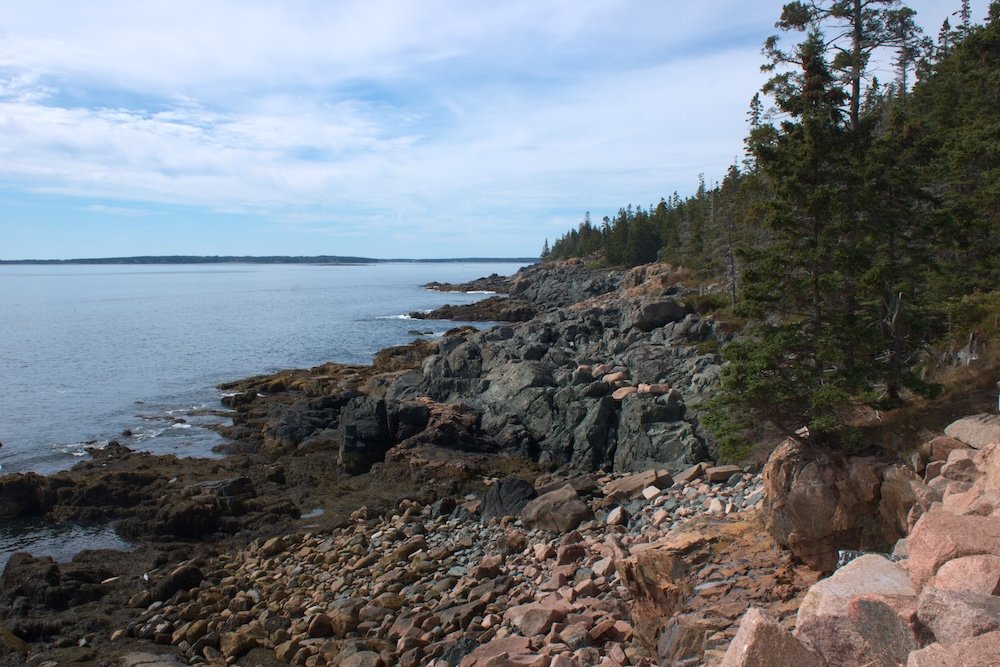
11:00 – Hike Around Jordan Pond
Jordan Pond is another very popular area at Acadia National Park. You’ll find the Jordan Pond House, which has food if you need a lunch break and some great hiking trails. Because of this area’s popularity, parking can be a struggle, but have patience and hopefully you’ll manage to find a spot from someone leaving.
So where do you hike at Jordan Pond? In my mind, there’s a handful of options. The easiest trail is the Jordan Pond Path which does a mostly flat loop all around the pond. For those who don’t want a lot of strenuous hiking, this can be a great option. And yes, I do think it’s worth circling the pond because my favorite views can from the very north end of the pond.
The Jordan Cliffs are located on the western side of Jordan Pond and are a strenuous adventure trail. Be prepared for a lot of rock scrambling, some cliff edges, and a few metal rungs. This trail kicked my butt and gave my quads a serious workout. My only complaint is that there wasn’t one sweeping view of the area. Presumably if I’d have taken the spur to Penobscot Mountain I’d have gotten an excellent view, but my legs just didn’t have it in them anymore.
From the north end of Jordan Pond, you can connect to the South Bubble. The Bubbles are two mountains nearby and climbing these offer fantastic views of the area. The Jordan Cliffs were nearly empty, but I passed plenty of people along this trail and of the people I talked to, most just hiked the South Bubble. I came up the back and had minimal rock scrambling. I then descended down the front of the South Bubble which definitely had more scrambling involved. As someone who prefers scrambling up to scrambling down, I feel like this is important to mention.
Which trail you do and how much you hike is up to you, but enjoy the views and savor this area.
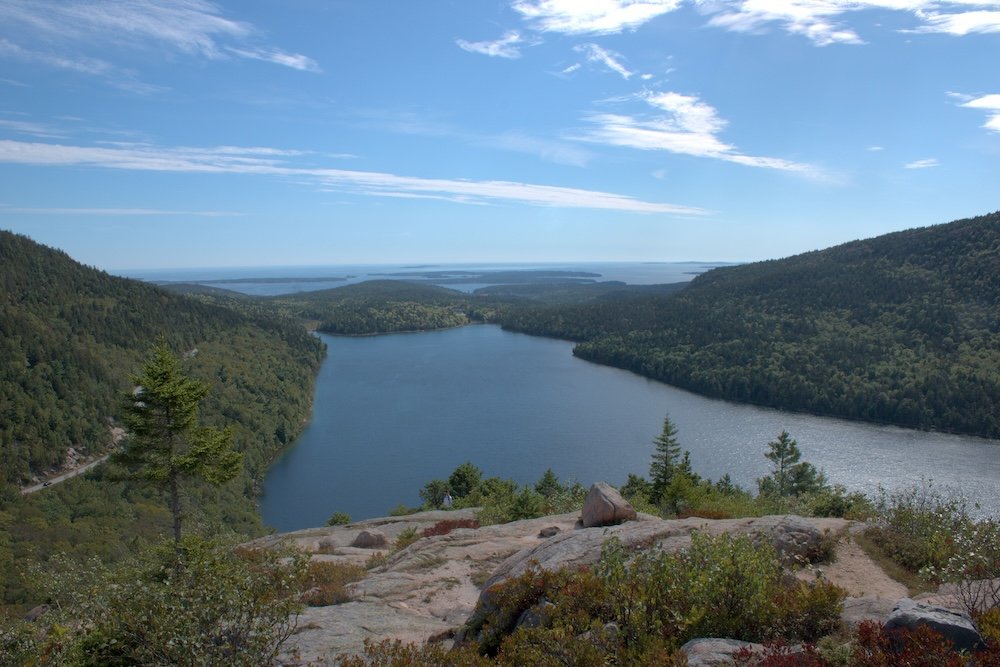
1:30 – Cadillac Mountain Road
Almost every entry in this one day itinerary talks about how popular the various areas are. Cadillac Mountain takes popularity to a whole new level because you are required to purchase an entry fee to drive up the mountain. You could hike (without a reservation), but after everything else you’ve done today, I would recommend driving. Learn more about getting a reservation in my guide to National Park Reservations.
As you drive up the mountain, you’ll pass plenty of pull outs which give nice views. If you’re here on a foggy day, you may find better views at these viewpoints than from the top of the mountain. When I visited, the top of the mountain was covered in fog and we couldn’t see anything below us, which was a huge bummer. The photos I’ve seen look incredible, but because you need to purchase your reservation in advance, you’ll have to take a gamble with the weather. Hopefully you get better views from the top than I did.
2:30 – More of Acadia Park Loop
Finish your day by doing the remaining stops on Park Loop Road. You’ll pass Eagle Lake which has a lovely little pull out. From there, loop back around to visit some of the stops you likely missed earlier in the day. The Wild Gardens of Acadia are home to numerous native plants and have nice walking paths through the gardens. There’s also a nature center where you can learn more. Lastly, I want to mention Schooner Head which has a nice view from the parking lot, but if you take the path down to the rocky shores, it’s even better.
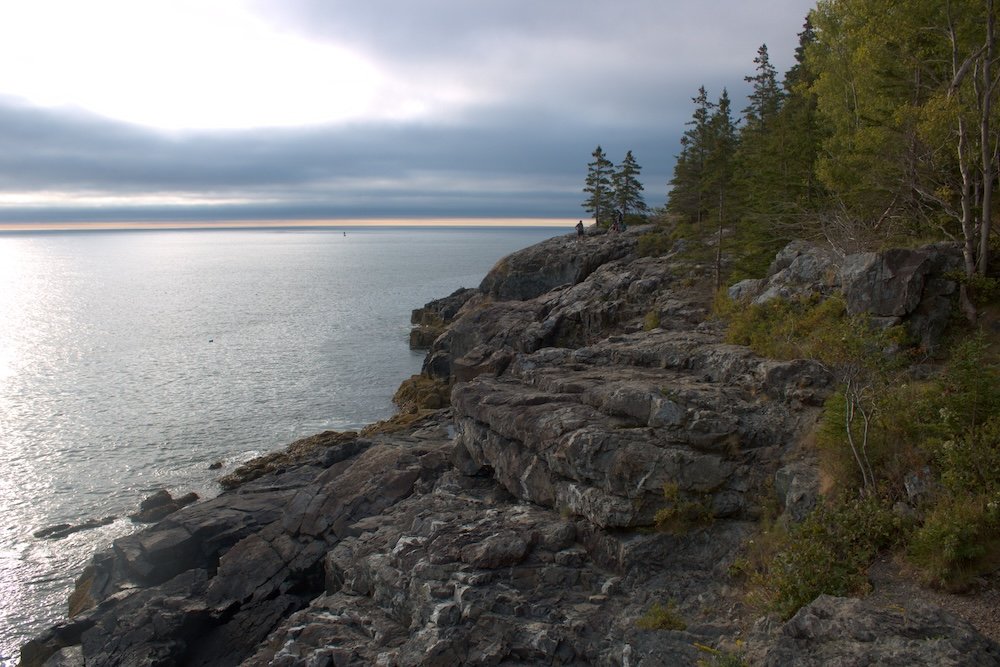
3:30 – Return to Bar Harbor
Your one day in Acadia National Park is over. Head to Bar Harbor (or wherever you’re staying for the night) and take some time to relax, get something to eat, and explore the town. My recommendation is to treat yourself to some lobster. You’re in coastal Maine after all.
With More Time
Of course there is more to do in Acadia National Park than what’s on this list. If you still have time and energy, there are more hikes in the area that you can look into. Walk along Ocean Path or hike another of the mountains.
There are more areas to explore in Acadia National Park, but once you account for driving time, I’m not sure if it’s necessarily worth it. Instead, I’d spend any extra time wandering through the shops of downtown Bar Harbor.
Is One Day Enough in Acadia National Park?
Whether or not one day in Acadia National Park is enough depends on the visitor. With one day, you have enough time to drive Park Loop Road and do a hike or two. For those with not a lot of vacation time, I think this can be a good option. Just be prepared for a busy day.
Personally, if you have more time, I’d recommend giving yourself at least two days in Acadia National Park. Two days allows you time to explore beyond the popular Park Loop Road and visiting some of the other mountains and areas of Acadia. Plus, you’ll be able to go at a more relaxed pace, which is always a bonus.
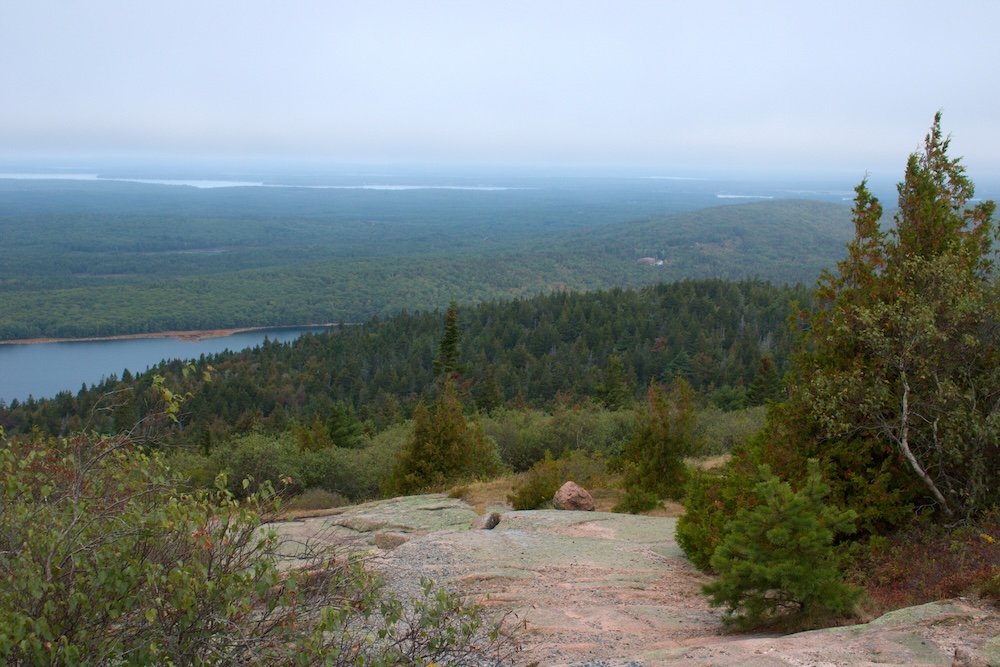
Entrance Fees for Acadia National Park
Entrance to Acadia National Park costs $35 per vehicle and your pass will be valid for seven consecutive days. Annual passes, such as the America the Beautiful pass are also accepted.
Note that visiting Cadillac Mountain Road comes with an additional fee. To visit Cadillac Mountain Road, you’ll need to pick up a reservation which comes with a timed entry. You can stay as long as you want, but you must have a valid entrance ticket in order to be permitted to drive up the mountain. Reservations cost $6 per vehicle.
Getting Around Acadia National Park
Acadia National Park surprised me with its transit system. While many national parks through the United States force visitors to have their own form of transportation, Acadia is different. You can bring your own vehicle, but if you don’t have a vehicle, you can still get to most places in the park.
A handy shuttle service connects Bar Harbor and Acadia National Park. Then within park, additional shuttles help to move visitors around. In total, there’s 11 lines that take visitors to all of the main sights throughout Bar Harbor and Acadia National Park. And the best part? This shuttle is completely free thanks to a massive donation that LL Bean makes to Acadia National Park each year.
Where to Stay at Acadia National Park
Bar Harbor is the closest town and sits right outside Acadia National Park. This is where most visitors stay as it’s the most convenient. You’ll have about a 15 to 20 minute drive to the popular Park Loop Road. That said, prices for hotels in Bar Harbor are understandably high. Make sure to budget accordingly.
I travel on a budget so my accommodation situation looked a little different. I spent the night in Bangor, which is about an hour and a half away from Acadia National Park. I left Bangor early in the morning and spent the day exploring Acadia National Park. Then I spent one night in Bar Harbor since I had tickets for sunrise at Cadillac Mountain the next morning. After a second day of exploring Acadia National Park, I drove back to Bangor where hotels were cheaper.
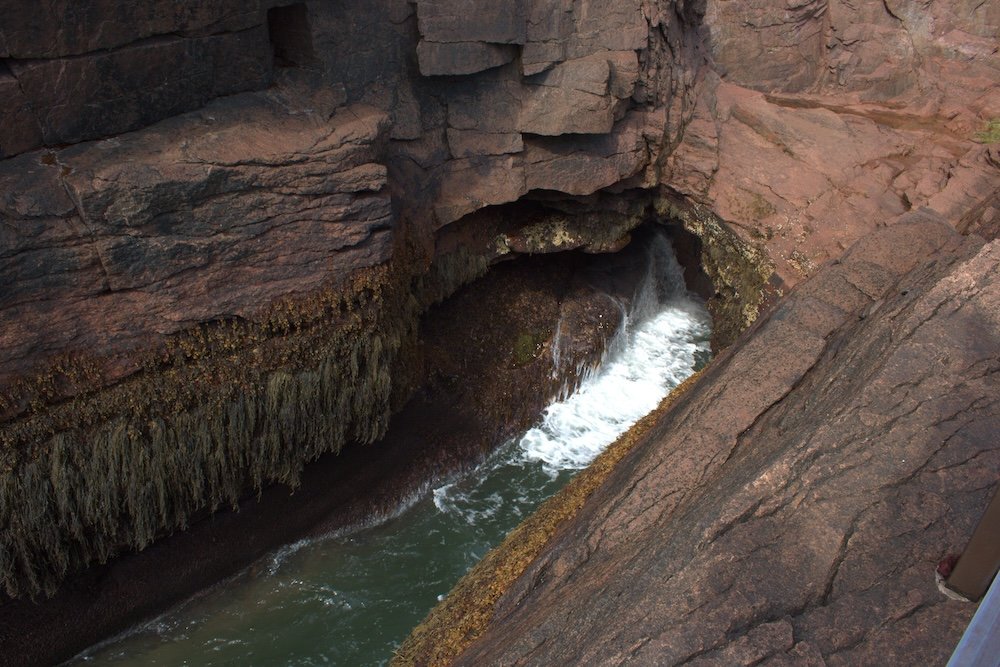
When to Visit Acadia National Park
Acadia is best visited from May through October as this is when the top sights are open. During the winter months, you can still visit Acadia National Park, but some roads close and the hiking can become dangerous.
In summer, you’ll have the warmest weather, but you can also expect a decent amount of tourists. In many places, as it gets later in the season, crowds thin out, but this is New England which is famous for its fall foliage. In late September and October, you can expect big crowds who come not just to see Acadia National Park, but also to see all the bright fall colors.
I visited in mid September and had really great weather. The trees had barely started to turn colors so if it’s important to you that you see the fall colors, I’d recommend early October. That said, there’s no guarantee when you’ll get peak colors as it changes slightly every year based on weather.
Final Thoughts
One day in Acadia National Park allows you enough time to see the highlights of Park Loop Road. Yes, these are some of the best parts of Acadia National Park, but you won’t have enough time to see everything. If you’re ok with a fast paced itinerary because of limited vacation time, you can still enjoy a visit to just one day in Acadia National Park.
Continue Your Adventure
Maine: In Portland, cruise the islands on a Mail Boat Tour. Nearby Portland is Cape Elizabeth which is home to the most photographed lighthouse in the United States. Learn more in my Maine Travel Guide.
More in New England: Maine is just the beginning of adventures in New England. In Rhode Island, tour the over the top mansions in Newport. In Connecticut, visit the historic fishing village of Mystic or one of its many state parks. Take a quick detour through New York to visit Albany. And don’t miss out on Stowe, Vermont – it’s a favorite among many travelers. Loop together these highlights in a great itinerary in either 10 days or one week.
US National Parks: Start planning your national park vacation with my US National Park Travel Guide. You’ll find information about each park, photos, itineraries, budget tips, advice for non-hikers, and more. Plus, don’t forget to book your timed entry reservations in advance!
